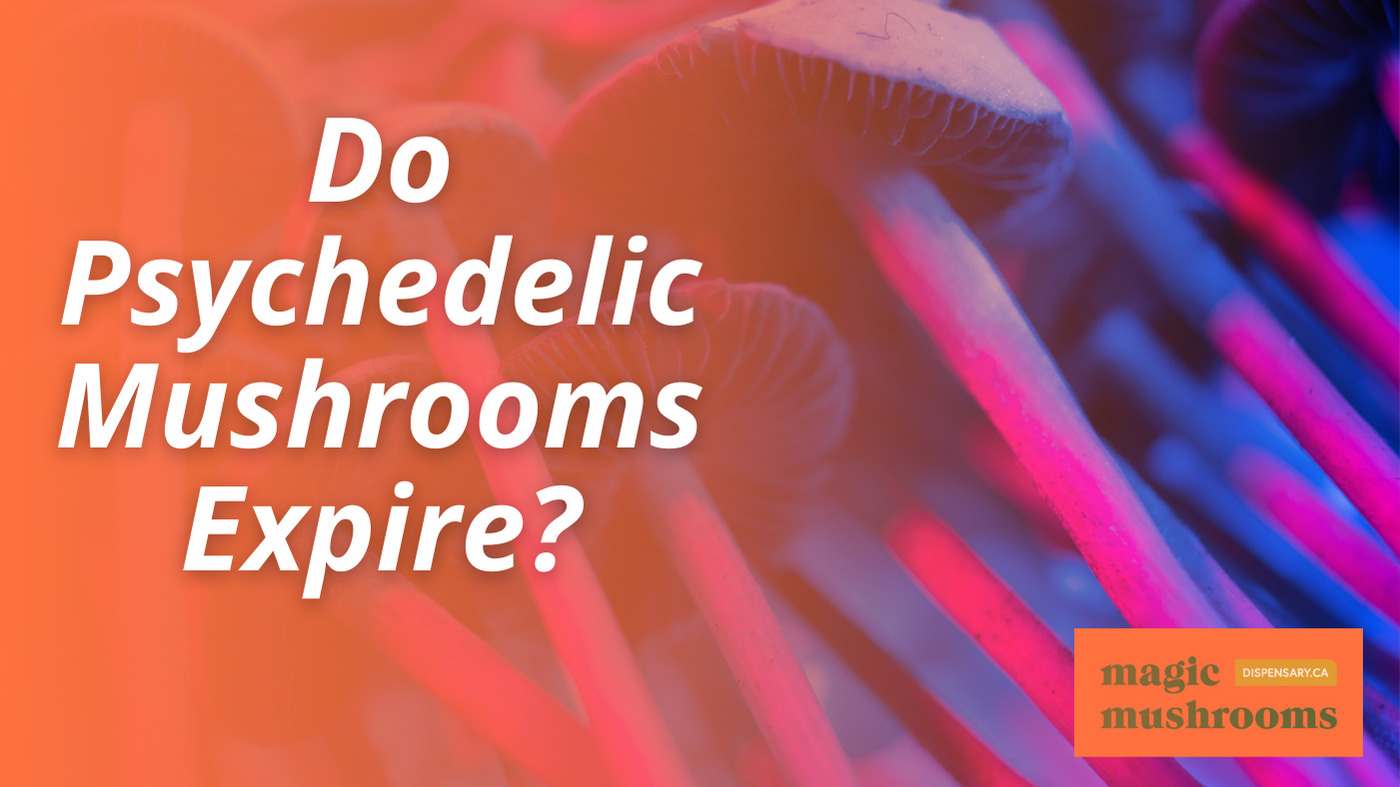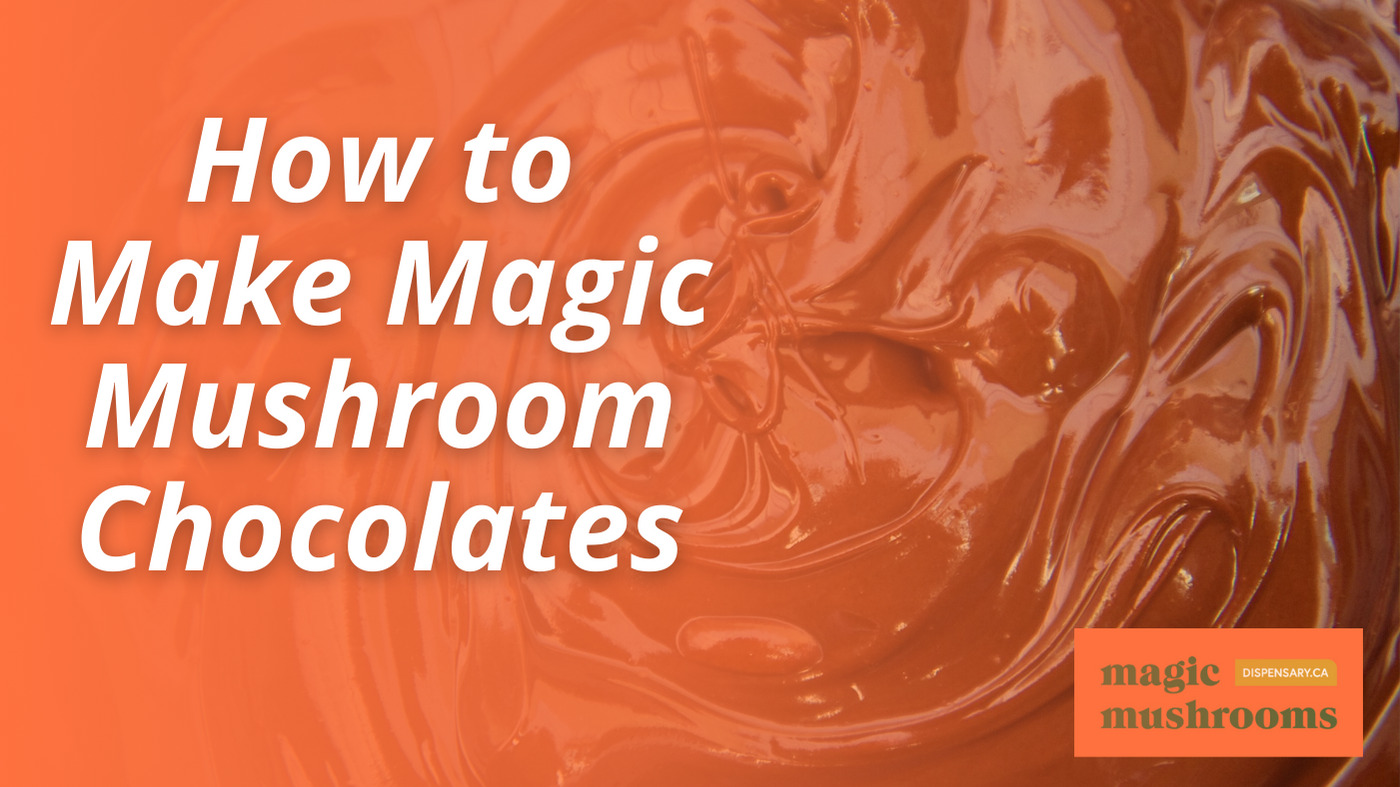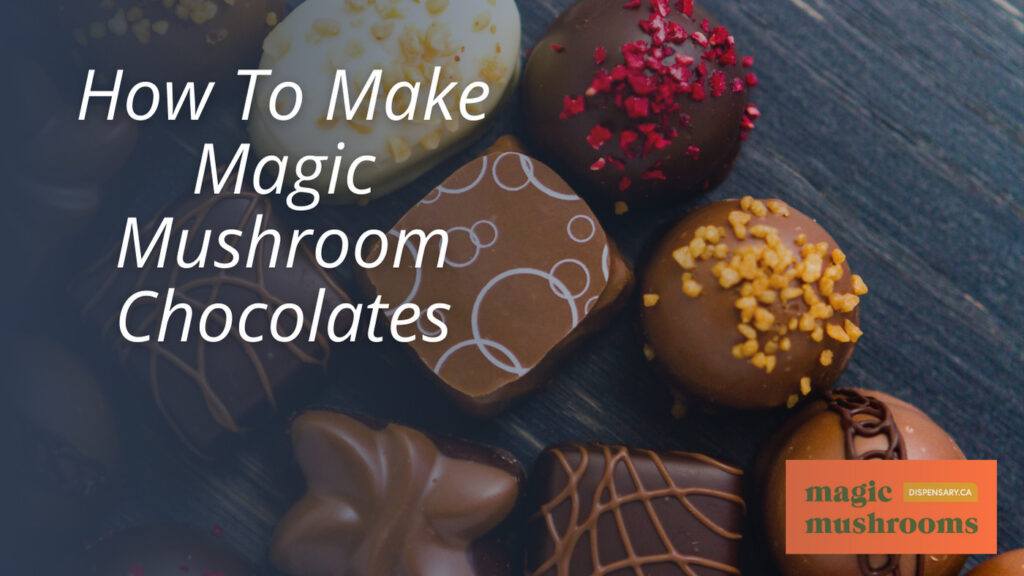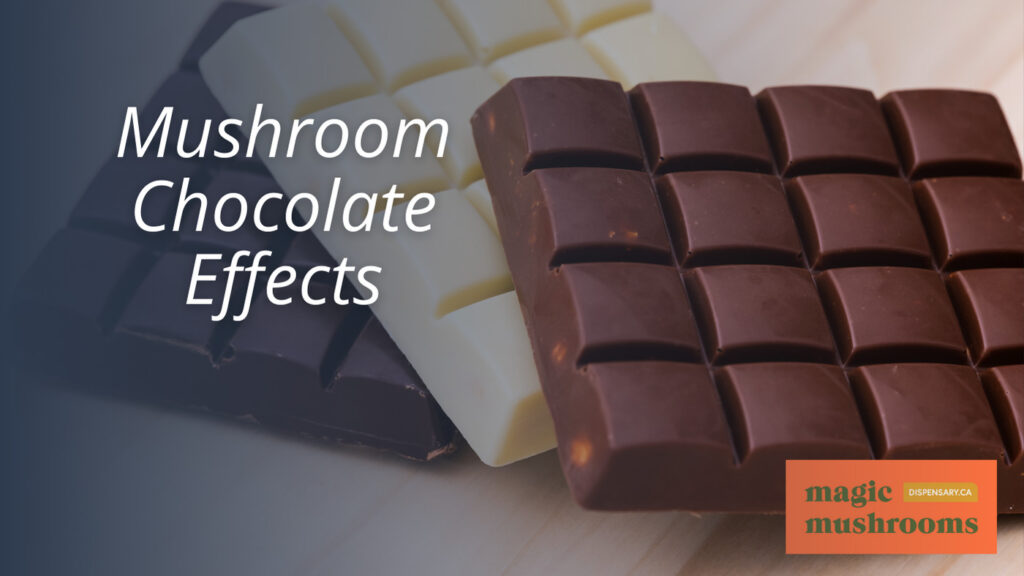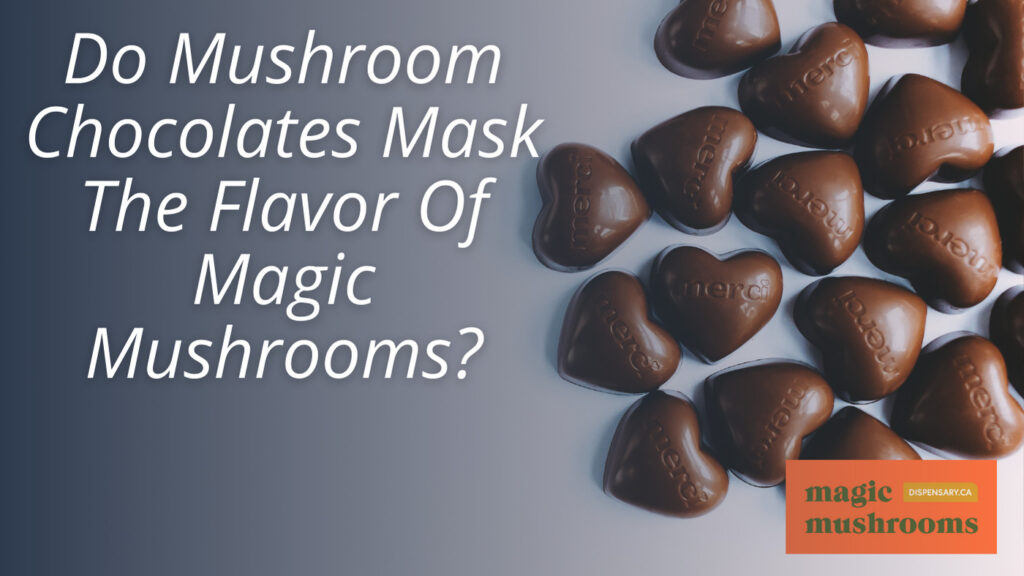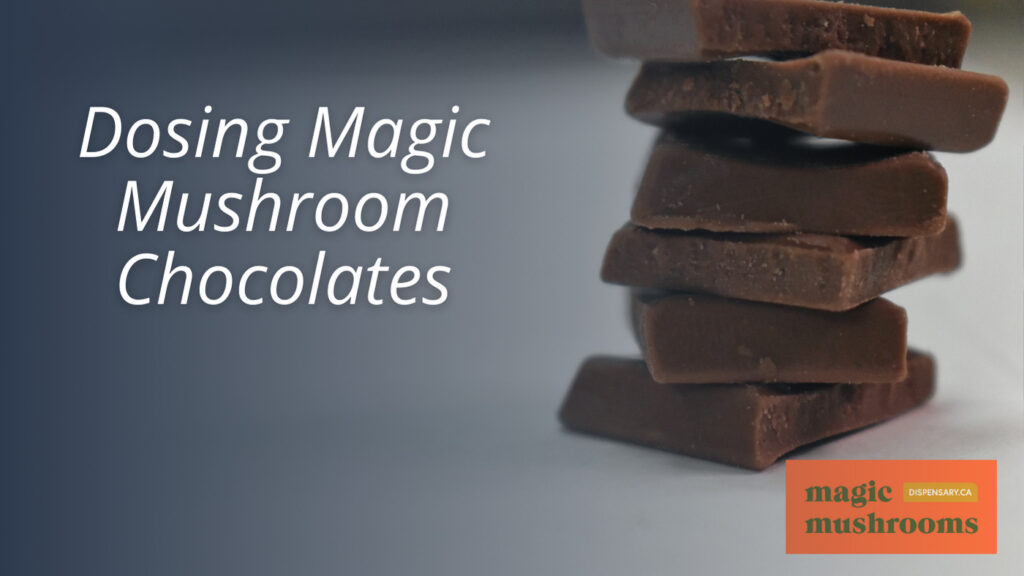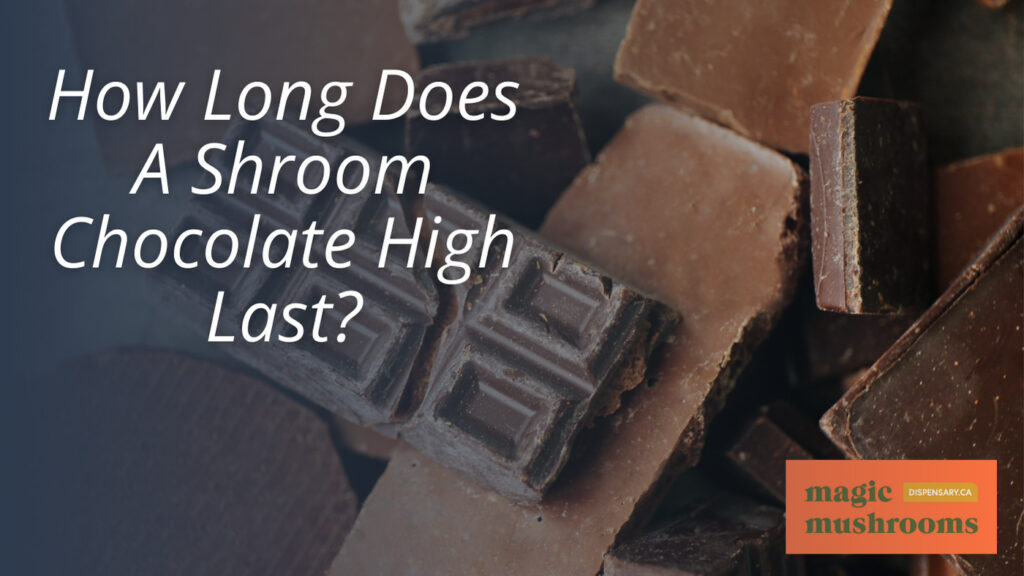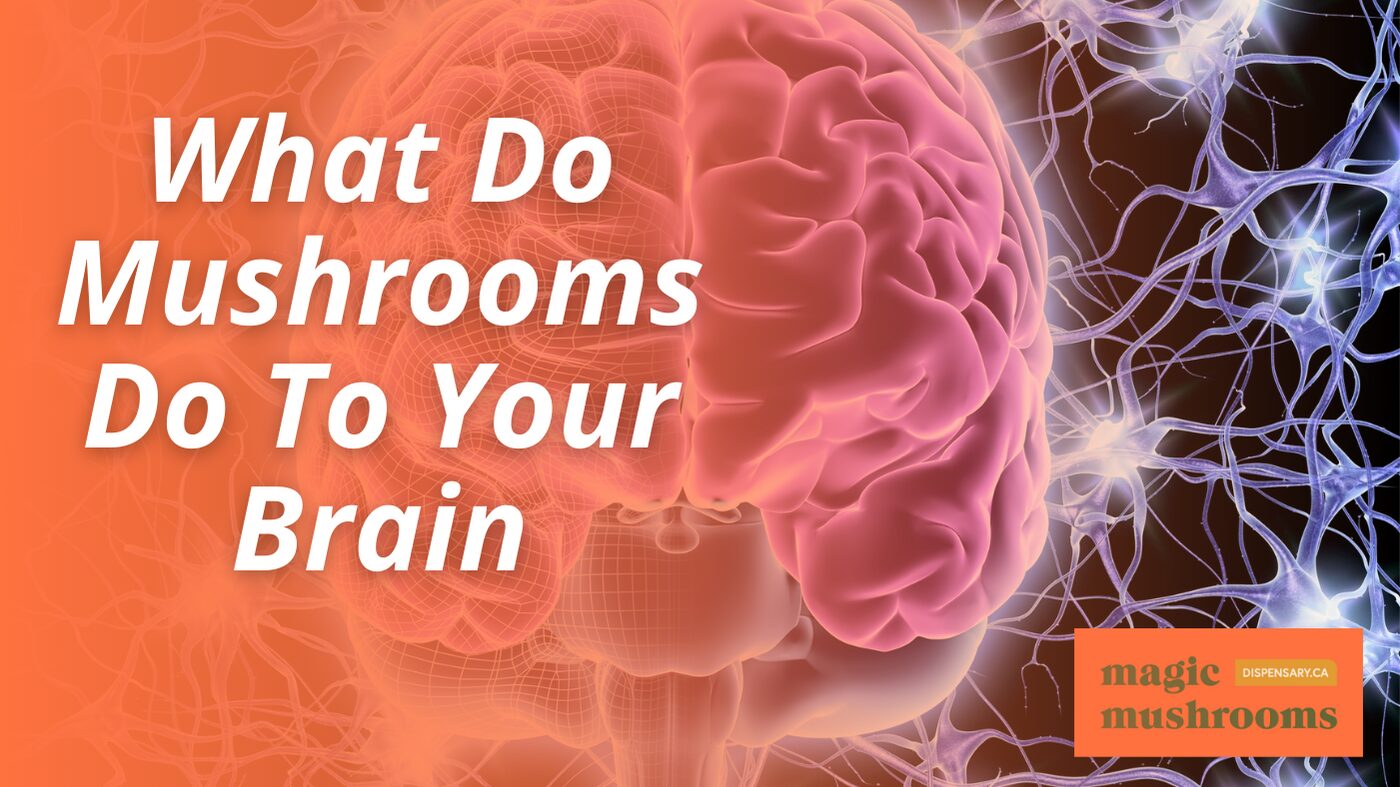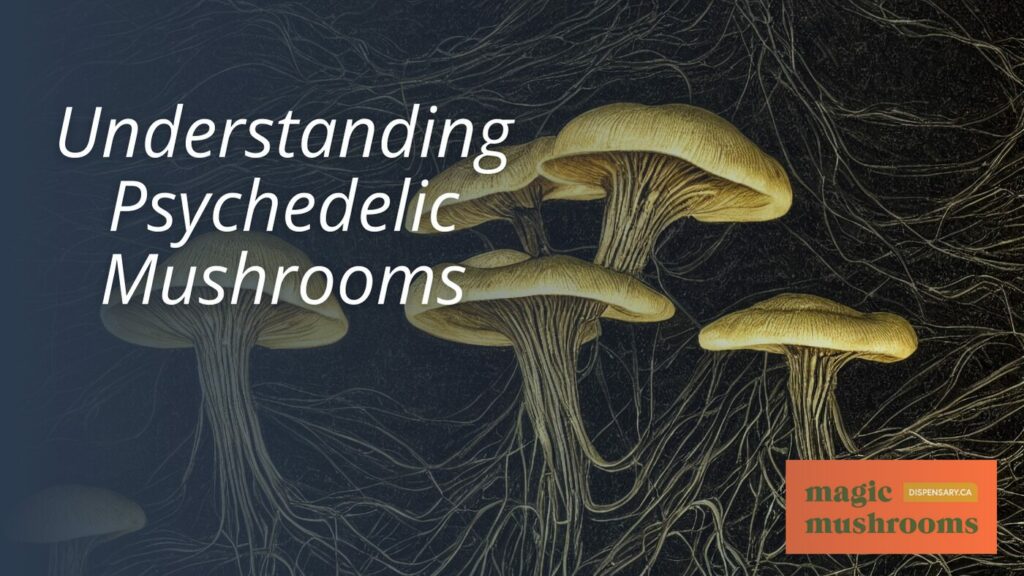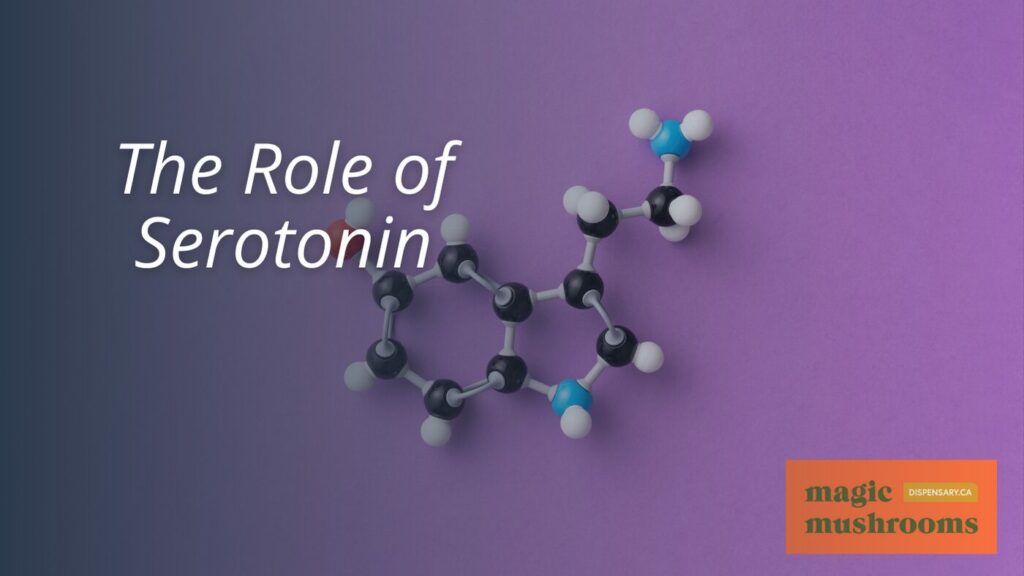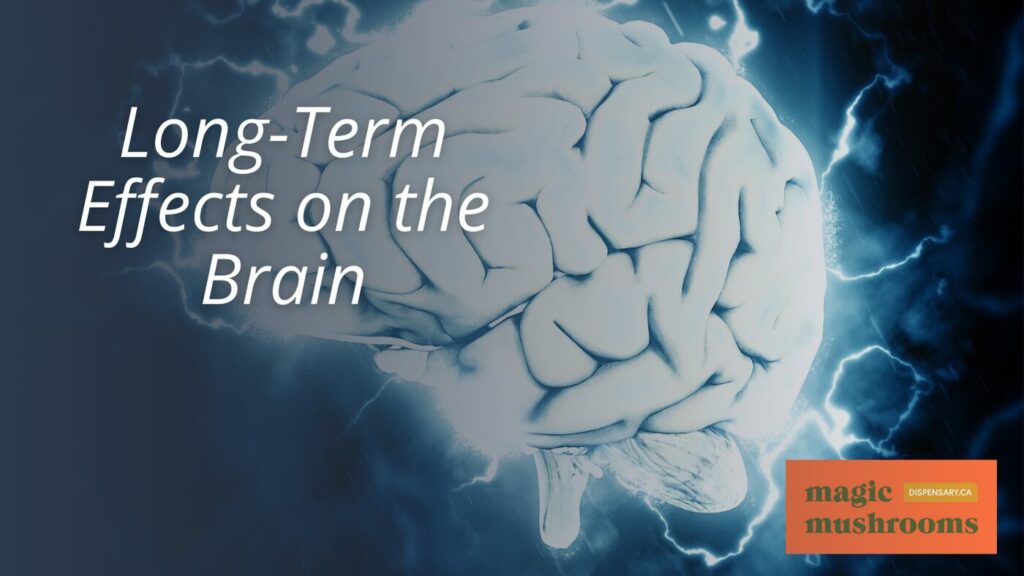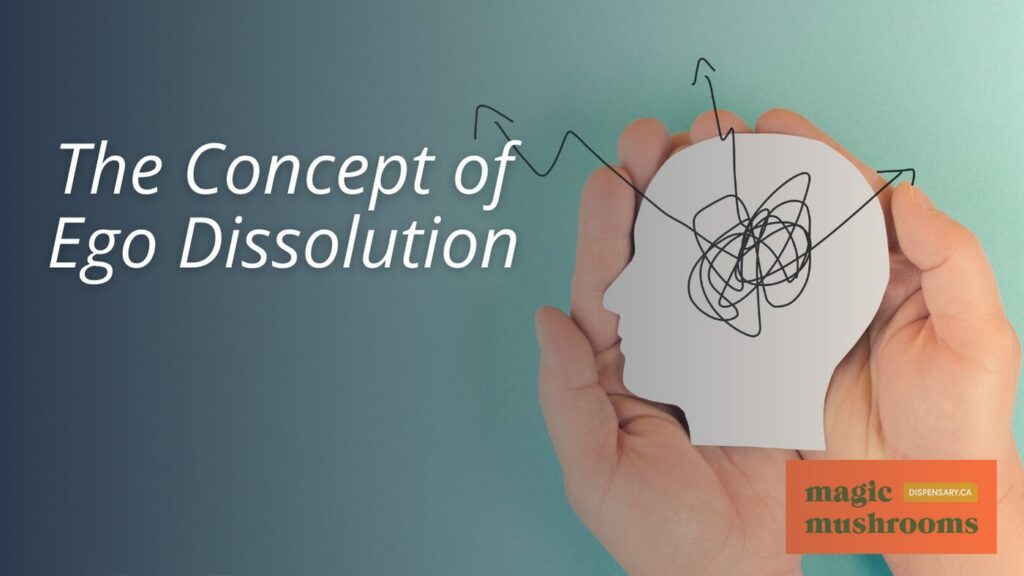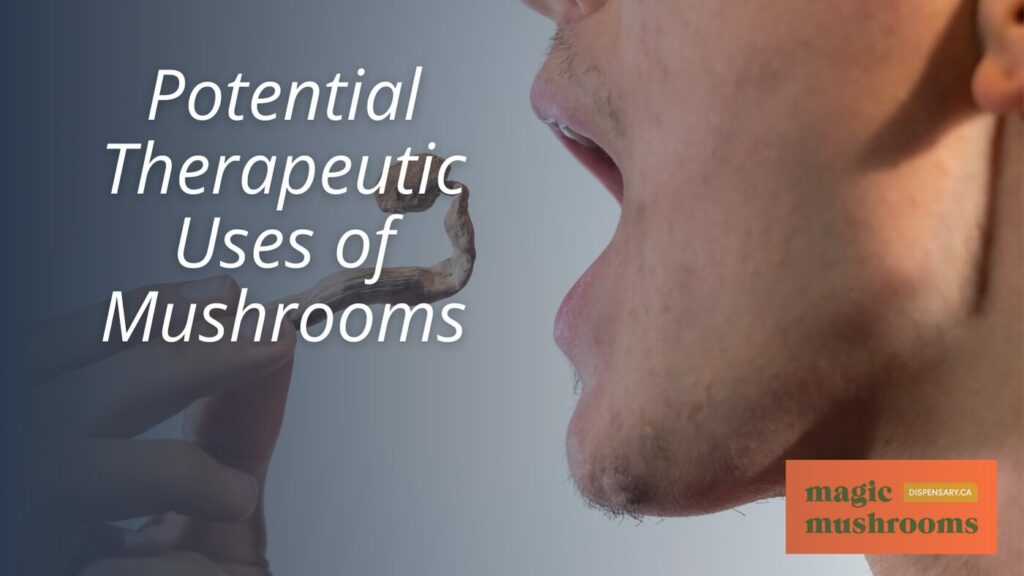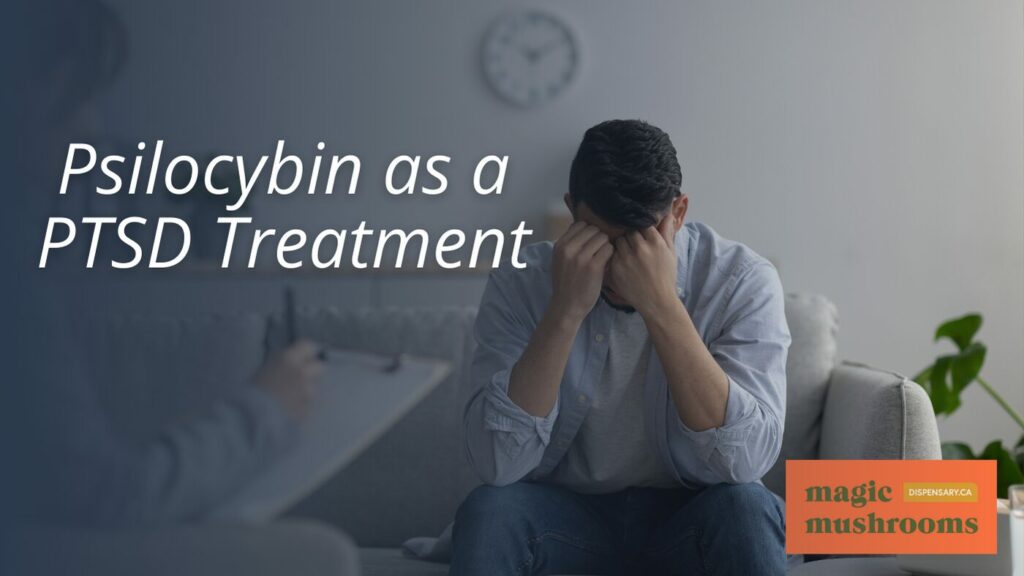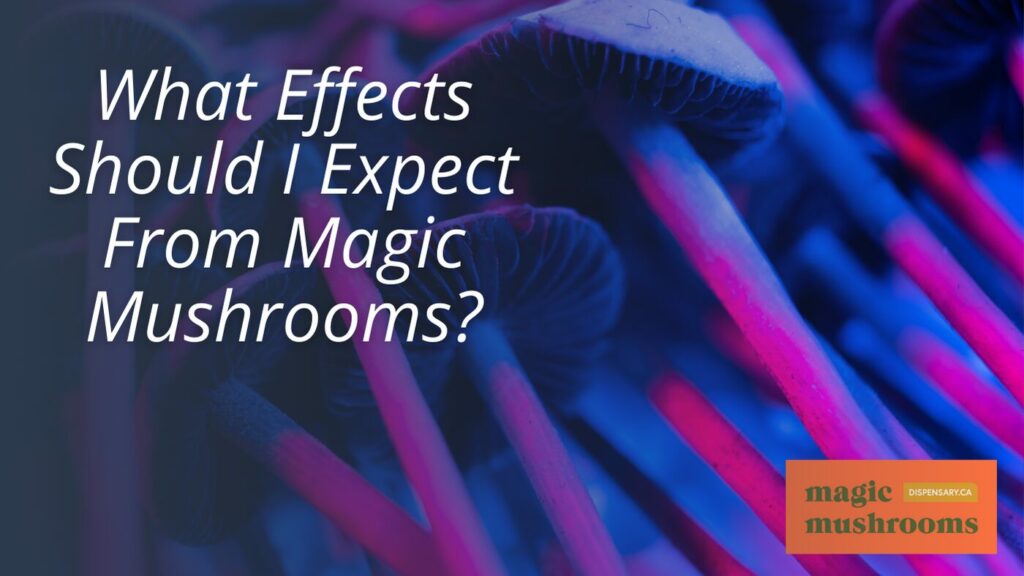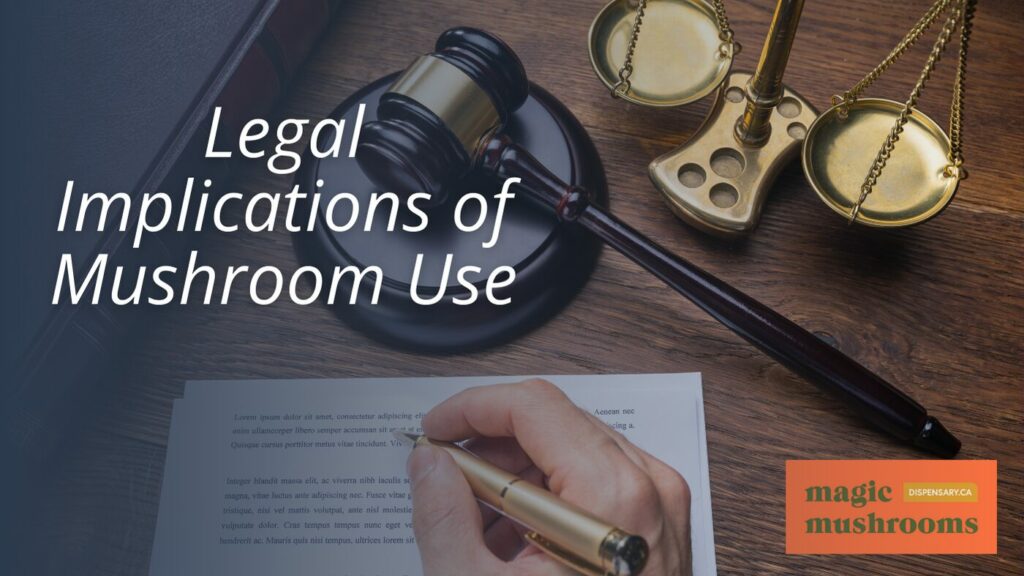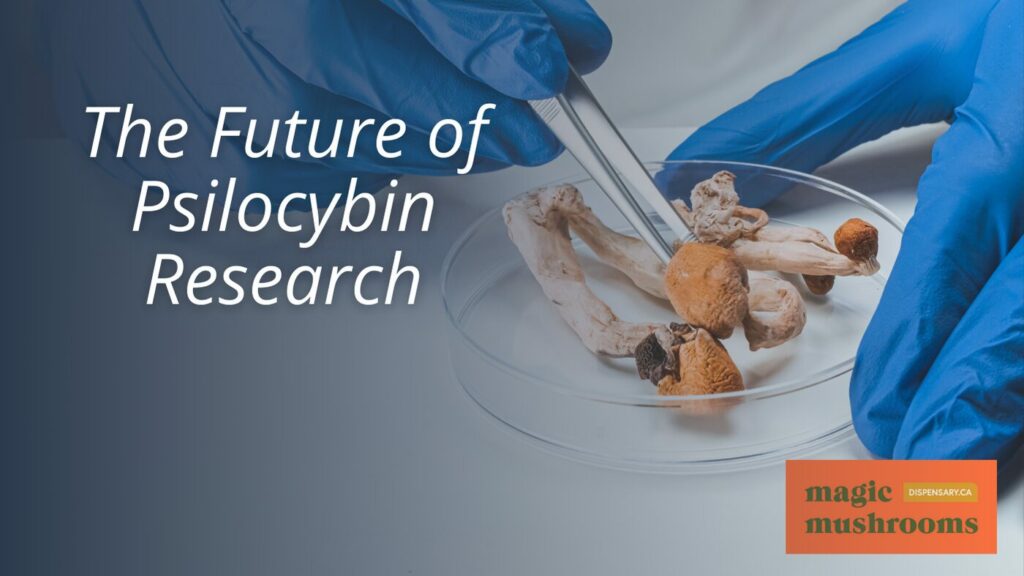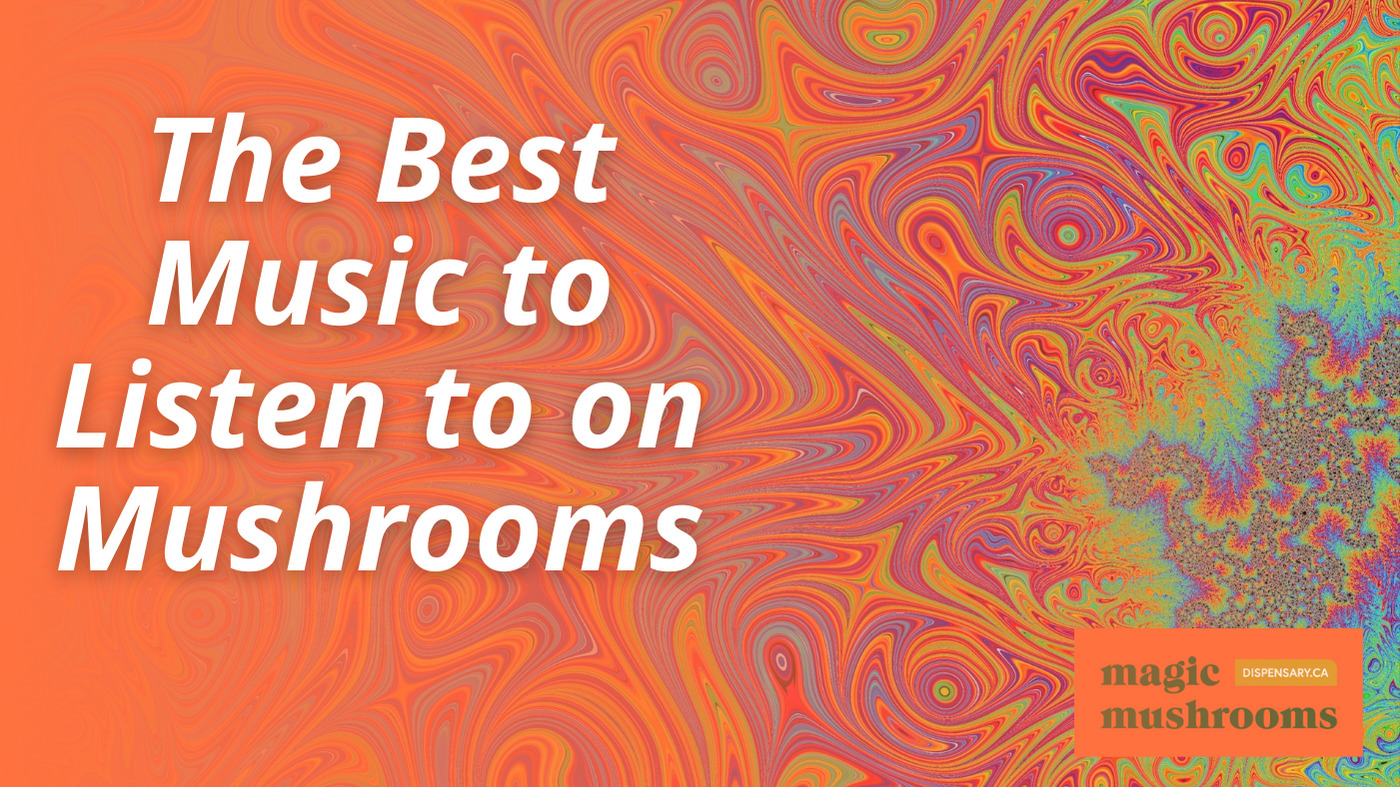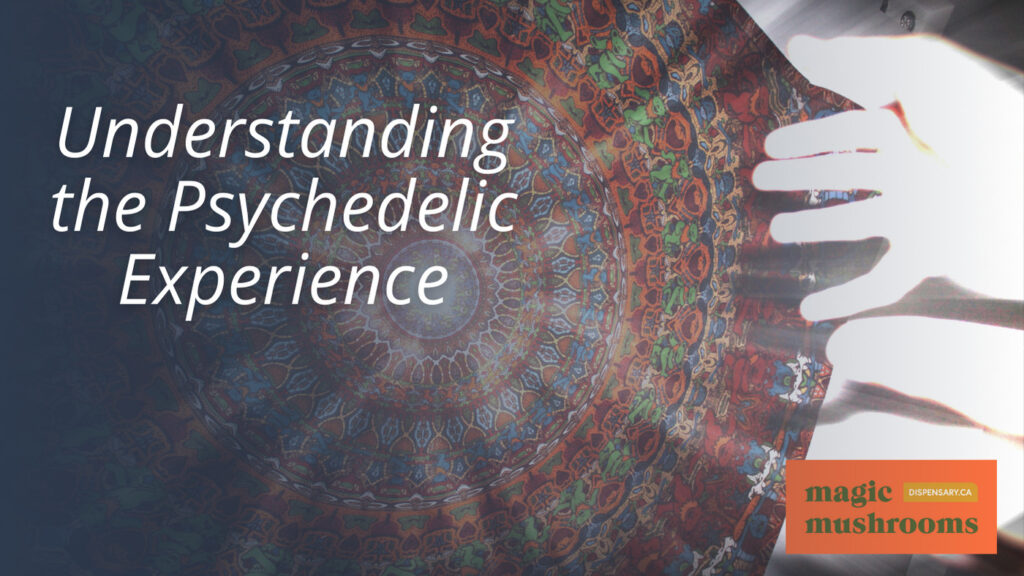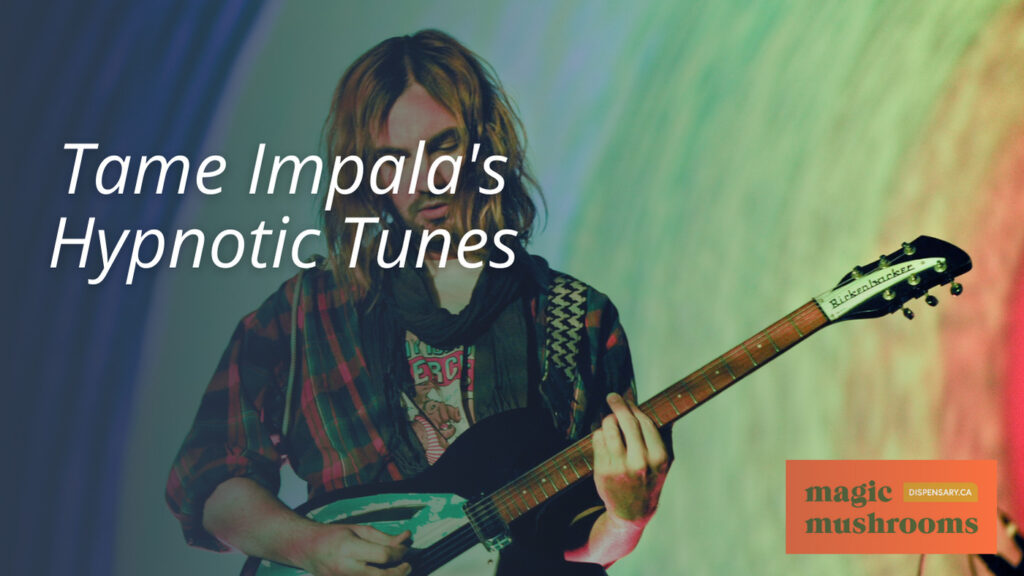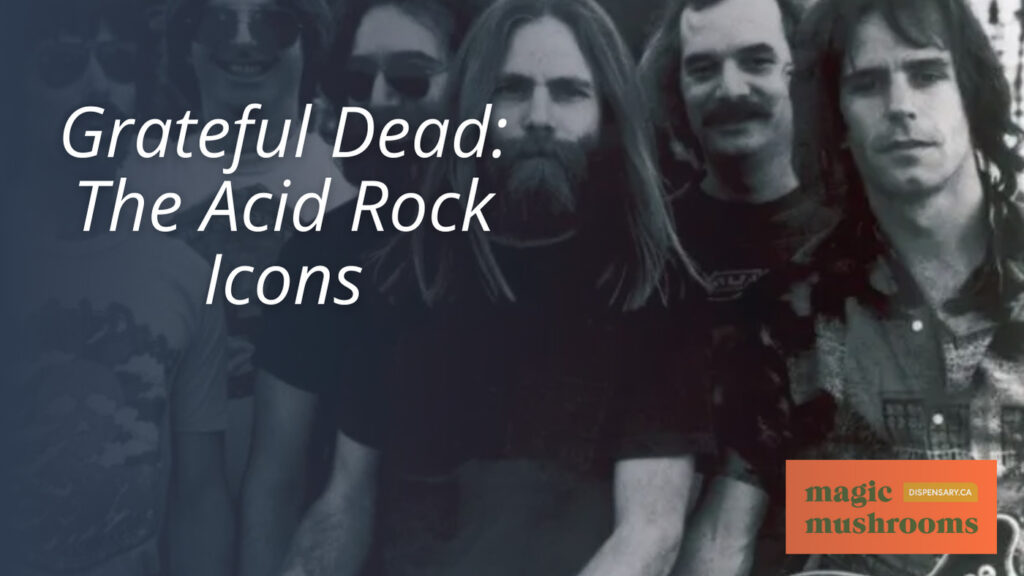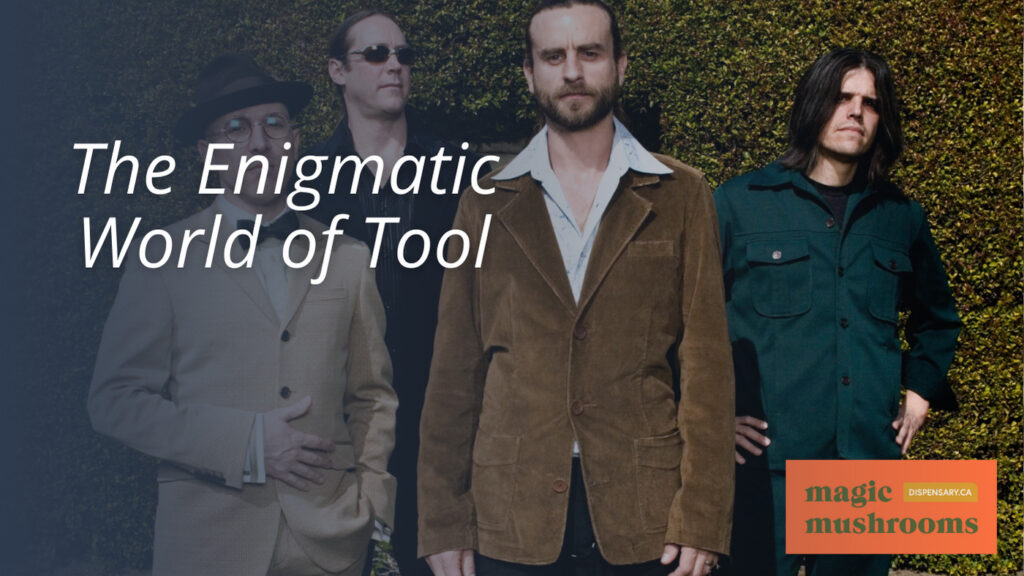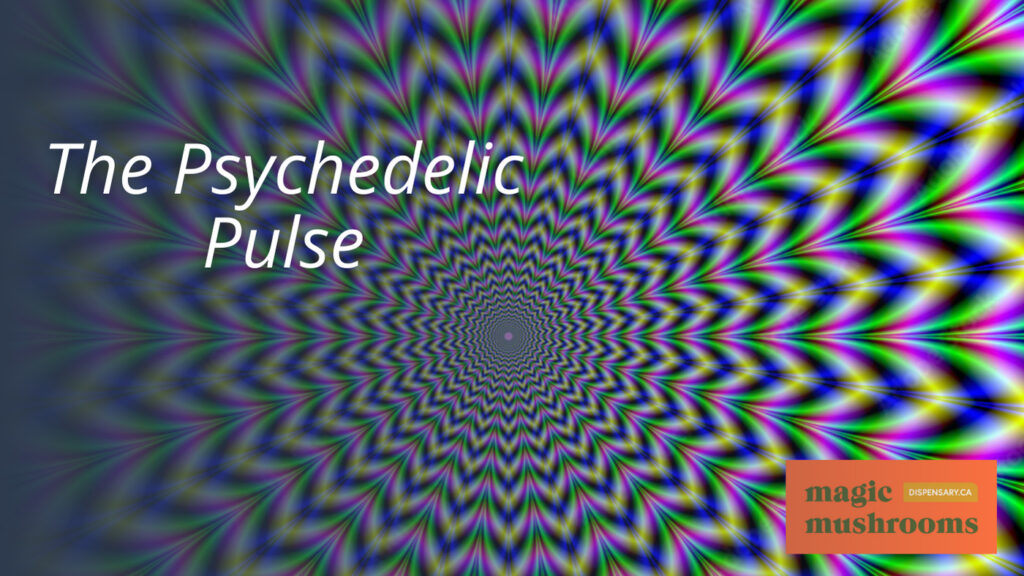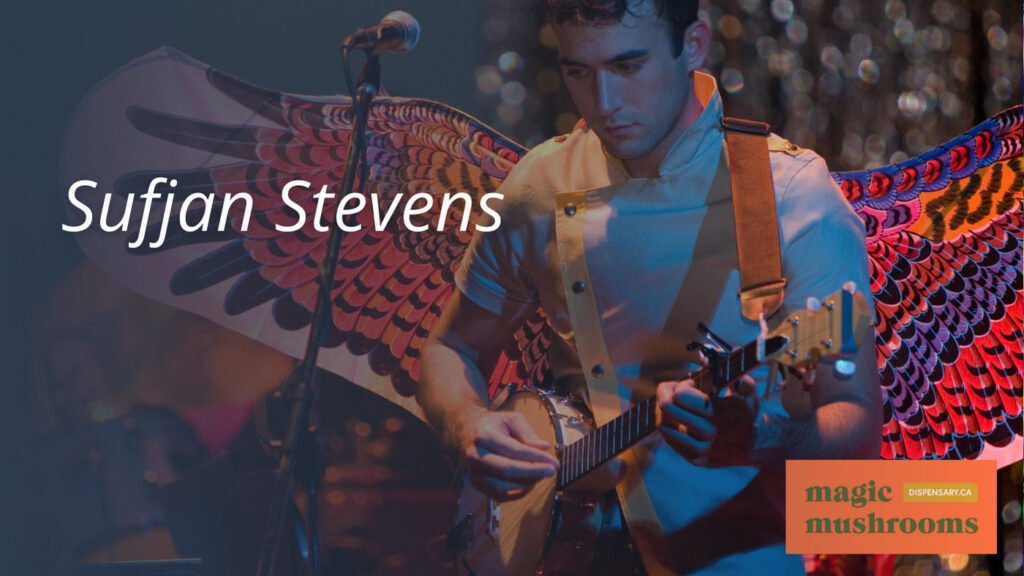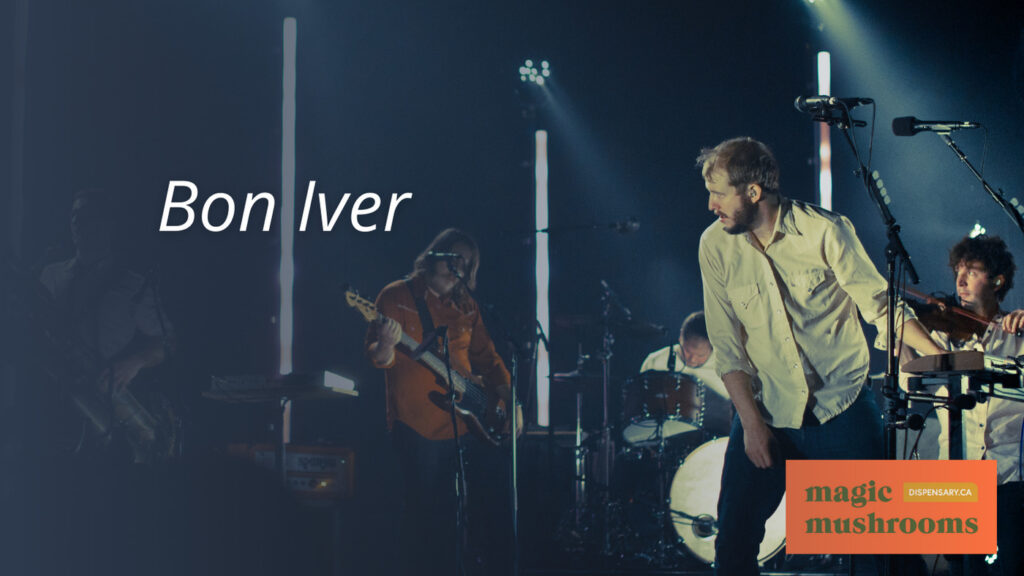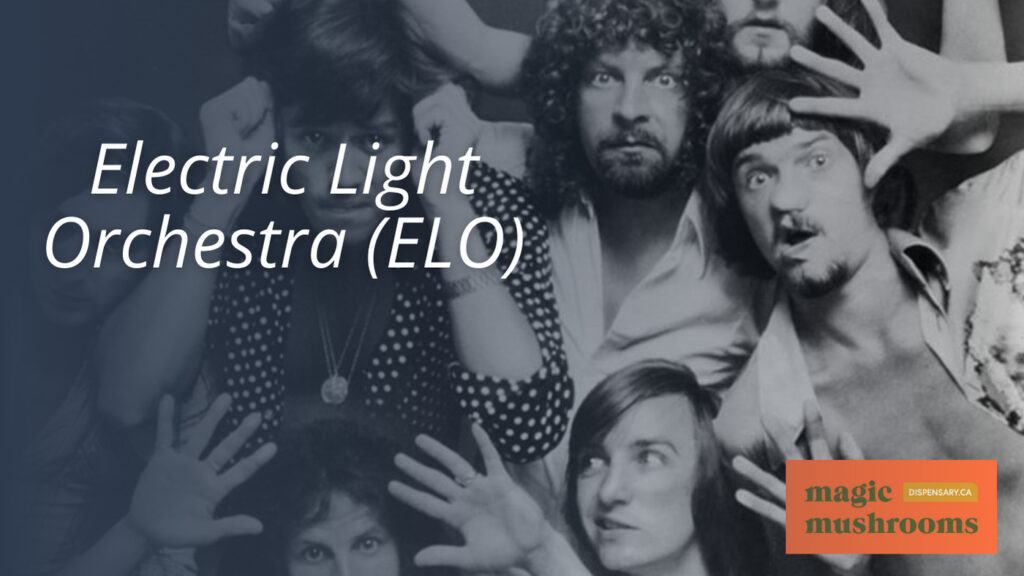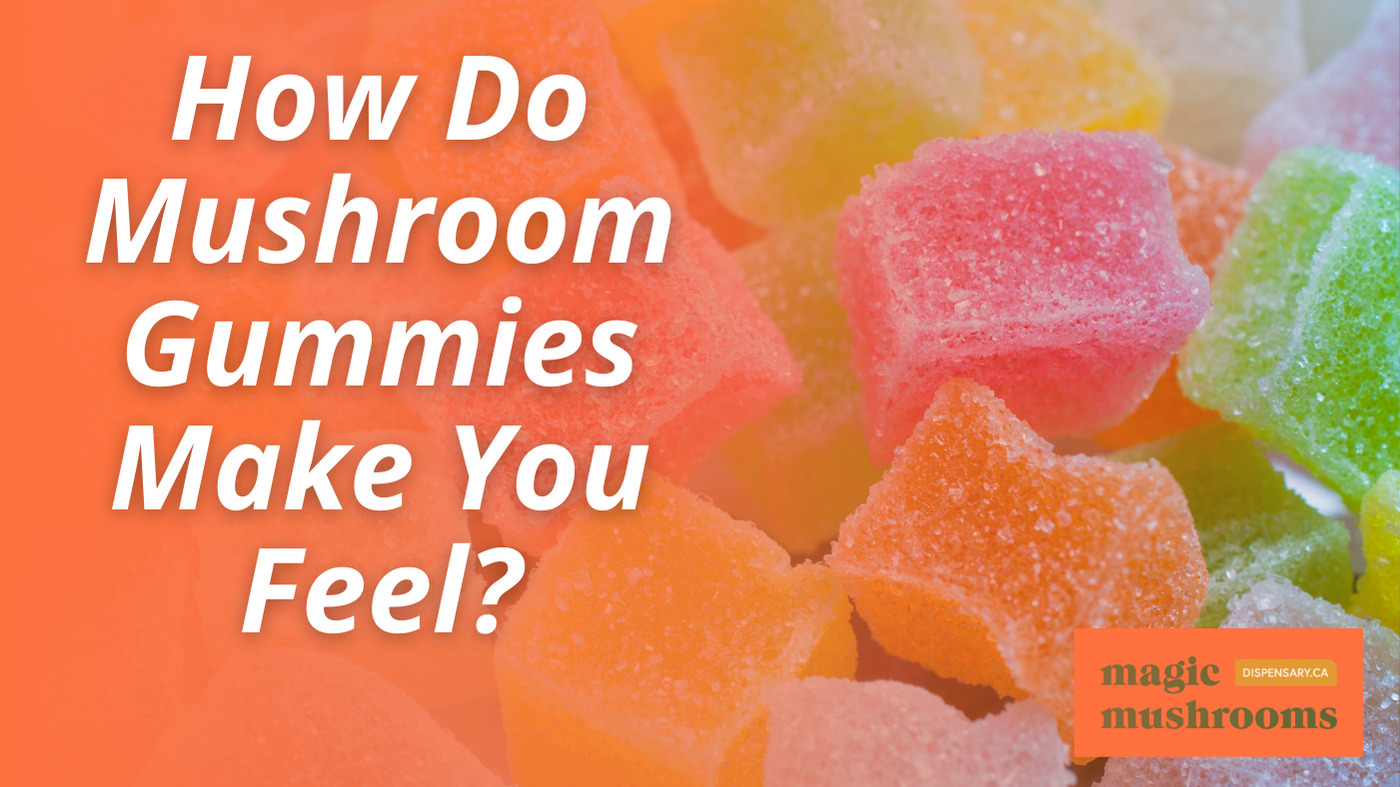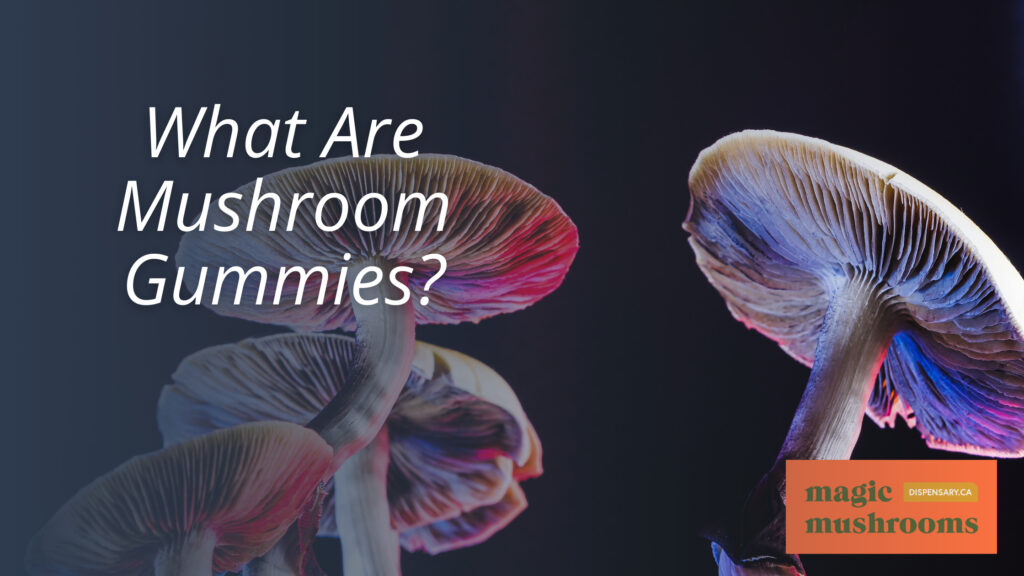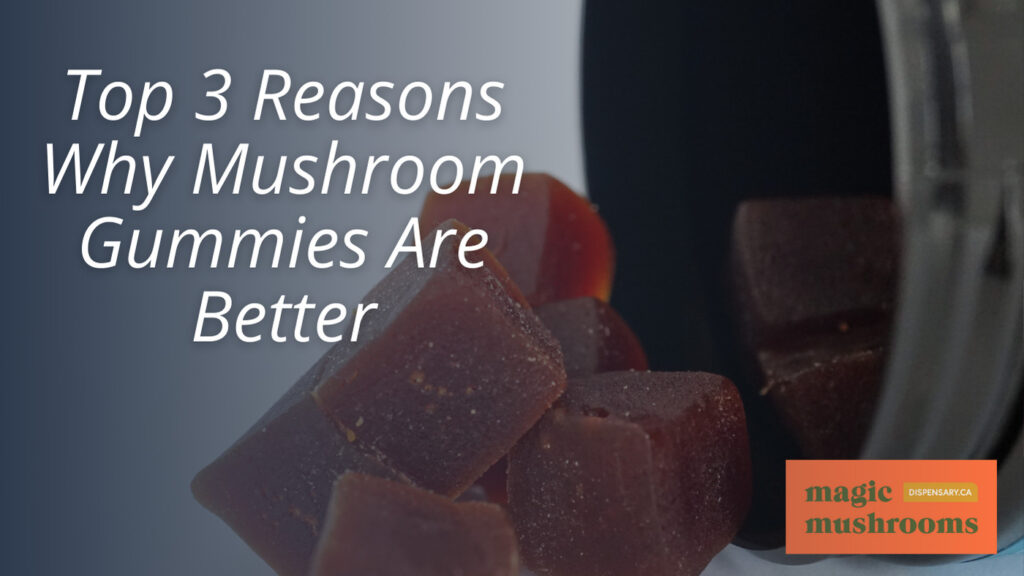Shocking Truth Revealed: Do Psychedelic Mushrooms Expire?
Indeed, the effectiveness of psychedelic mushrooms can fade as time progresses, essentially indicating that they have an expiration. This deterioration is mainly attributed to their exposure to moisture, heat, light, and oxygen, all of which contribute to the breakdown of their active compound, psilocybin. Without proper storage in optimal conditions – which means keeping them cool, dry, and away from light – the potency of these mushrooms can decrease.
As expected, the ingestion of expired mushrooms can result in less potent or even unpredictable psychedelic experiences. Understanding more about proper storage techniques and monitoring changes in mushroom characteristics will significantly aid their longevity and preserve their psychoactive effects.
Key Takeaways
- Psychedelic mushrooms don’t technically expire, but their potency can diminish over time due to environmental factors.
- Exposure to heat, light, moisture, and oxygen can accelerate psilocybin degradation in mushrooms.
- Signs of mushroom degradation include discoloration, loss of potency, and mold growth.
- Proper preservation methods, such as drying, vacuum sealing, and freezing, can extend the shelf life of psychedelic mushrooms.
- Consuming degraded mushrooms can result in less potent or unpredictable experiences and may pose health risks.
Understanding Psychedelic Mushrooms
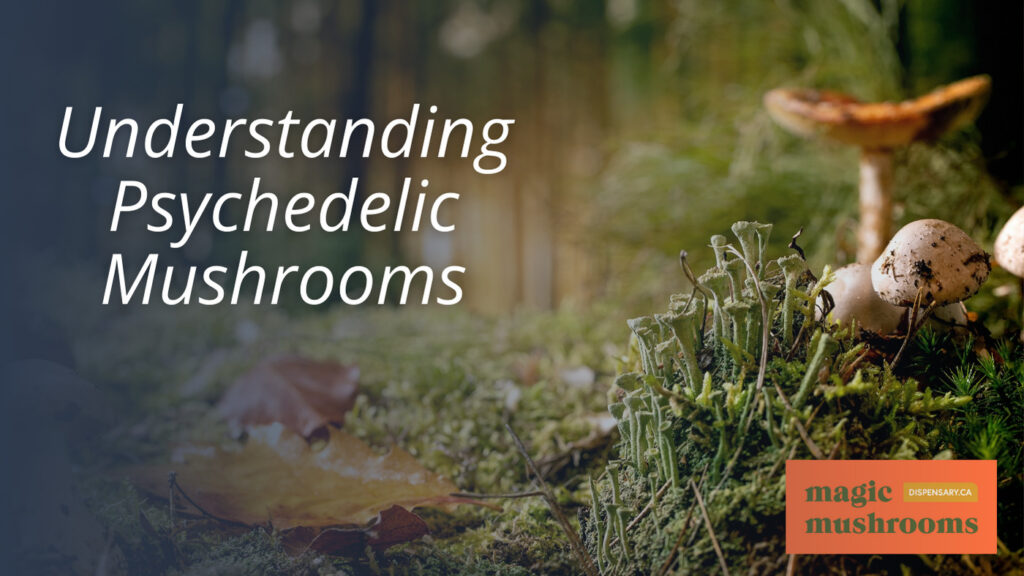
To fully comprehend the therapeutic potential of psilocybin, it is essential to understand the nature and preservation of psychedelic mushrooms, such as magic mushrooms, which contain this potent compound. The critical question that arises and often confounds users is – do psychedelic mushrooms expire? The answer is nuanced. The potency of psilocybin, the active compound in magic mushrooms, is vitally dependent on the mushroom’s preservation and storage conditions.
Understanding whether magic mushrooms can expire requires clarity about storage conditions. For instance, properly dried and stored psychedelic mushrooms can retain their potency for several months to a few years. Environmental factors like humidity, light exposure, and temperature play a noteworthy role in determining the shelf life of these mushrooms. By storing psychedelic mushrooms in a cool, dark, and airtight container, one can prolong their potency and prevent degradation.
It is equally important to monitor the appearance, smell, and taste of psychedelic mushrooms to determine if they have expired or degraded in quality. If you’re wondering, can shrooms expire? The answer is that they can, if not properly preserved. Additionally, the consumption of expired or degraded mushrooms can potentially lead to adverse effects.
Therefore, psilocybin’s promise of liberation from mental health disorders is considerably dependent on the careful preservation of the mushrooms from which it is derived. Proper storage and regular checks for signs of degradation can ensure that the beneficial properties of these mushrooms are retained, thereby maximizing their therapeutic potential.
The Active Ingredient: Psilocybin
Delving into the heart of psychedelic mushrooms, we encounter psilocybin – a naturally occurring compound primarily responsible for the hallucinogenic effects these fungi are known for. Psilocybin’s importance is not static; it can vary based on mushroom species, growing conditions, and storage methods.
Psilocybin is renowned for its ability to alter perception, mood, and cognition, leading to intensely psychedelic experiences. Recent research has illuminated the potential for psilocybin to serve as a tool for mental health treatment. In particular, studies have highlighted its efficacy in treating major depression, with participants reporting significant decreases in depression severity after receiving two doses of psilocybin.
Importantly, psilocybin does not technically expire. However, its potency can degrade over time due to exposure to light, heat, moisture, and oxygen. This degradation can diminish the psychedelic effects the compound can induce. As a result, proper storage is vital to preserving the potency of psilocybin in mushrooms. A calm, dark, and dry environment can help maintain the compound’s potency for an extended period.
Shelf-Life of Common Foods
Understanding the domain of common foods, which varies with storage conditions, packaging, and the type of food, is crucial for ensuring food safety and reducing waste. This comprehension is a key step towards consumer liberation from unnecessary consumption and waste, fostering a conscious and sustainable lifestyle.
Canned goods, for example, have impressive longevity, remaining edible for years when stored appropriately. This attribute makes them reliable stock for contingency situations, reducing stress about food availability. Fresh produce, on the other hand, has a notably shorter shelf life. Depending on the type of fruit or vegetable, it could last from a few days to a couple of weeks, making prudent consumption and restocking necessary.
Dried goods like rice and beans can maintain their quality for 1-2 years or more when stored in ideal conditions. This knowledge liberates us from the urgency of immediate consumption and allows for strategic meal planning.
However, perishable items like dairy and meats require different kinds of attention. These foods have a limited lifespan and should typically be consumed within a few days to a week, necessitating frequent grocery trips or careful meal prepping.
Understanding and respecting these varying shelf lives, along with recognizing food expiration dates and signs of spoilage, are crucial for food safety. Not only do these practices reduce the risk of foodborne illness, but they also minimize food waste, contributing to an environmentally responsible lifestyle.
Preserving Psychedelic Mushrooms
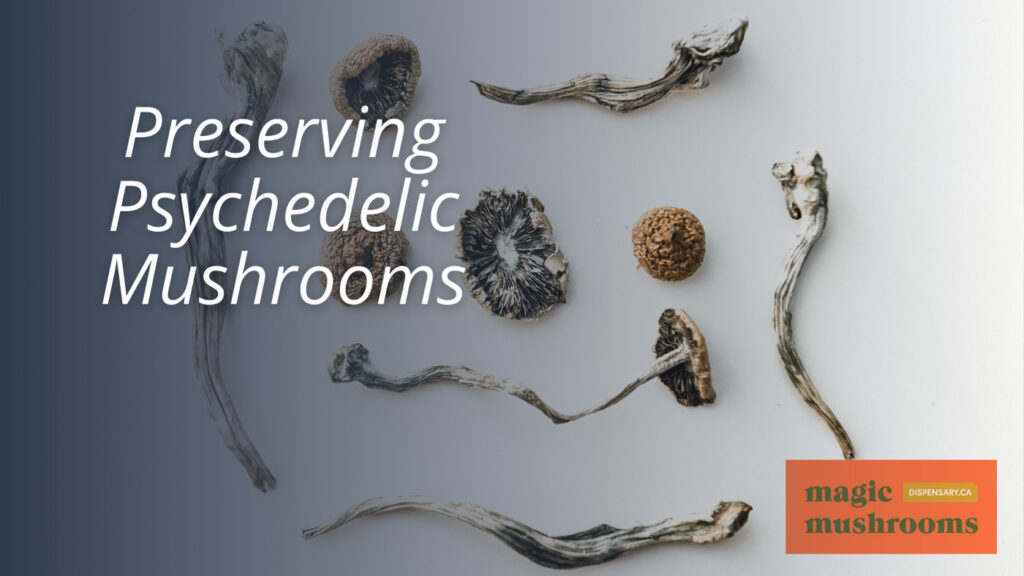
Exploring the domain of psychedelic mushroom preservation can be intricate yet vital due to the delicate nature of psilocybin, the active compound that tends to oxidize over time. This process of oxidation, if not mitigated, can lead to a significant decrease in the mushrooms’ potency. Hence, preserving these unique fungi properly is essential to maintaining their beneficial attributes.
Proper storage is one of the key steps towards preserving psychedelic mushrooms effectively. This involves keeping the mushrooms in airtight containers, away from direct sources of light, heat, and moisture. These environmental factors can affect psilocybin stability, leading to its degradation and, as a result, the loss of the mushroom’s potency.
Another viable preservation method is freezing. This process can extend the shelf life of the mushrooms, providing an excellent way to prevent the degradation of psilocybin. However, it’s crucial to remember that freezing should be done to avoid the formation of ice crystals, which can damage the mushroom’s structure.
For those seeking longer-term storage options, vacuum sealing or using desiccants like silica gel can be highly beneficial. These methods remove air and moisture, creating an unfavorable environment for oxidation and degradation processes.
Lastly, monitoring for signs of mold, discoloration, or a loss of potency can indicate that the mushrooms have expired. This vigilance can ensure the consumption of only fresh and potent mushrooms, thereby maximizing their potential benefits. The potency and, hence, the effectiveness of these powerful fungi can be sustained through proper preservation techniques.
Factors Affecting Mushroom Freshness
In evaluating the freshness of psychedelic mushrooms, various factors such as moisture content, exposure to light, temperature, and air circulation play pivotal roles. The moisture content of these fungi is critical to their longevity. Too much moisture can lead to mold growth, while too little can cause the mushrooms to dry out and lose their potency. Adequately stored mushrooms should be kept in a cool, dark, and dry place to prevent the degradation of psilocybin, the active compound that gives the mushrooms their psychedelic properties.
The exposure of psychedelic mushrooms to light can also affect their freshness. UV light from the sun can degrade psilocybin, resulting in a less potent mushroom. Hence, storing these mushrooms in a dark place, away from direct sunlight, is of utmost importance.
Temperature is another significant factor. High temperatures can speed up the degradation process. Keeping your mushrooms in a cool environment can help maintain their freshness and potency.
Air circulation is equally important. Poorly ventilated spaces can trap moisture and promote the growth of mold, which can spoil the mushrooms. Ensuring good air circulation in the storage area can significantly contribute to the freshness of your psychedelic mushrooms.
Signs of Mushroom Degradation
While understanding the factors that affect mushroom freshness is important, it is equally critical to recognize the signs of degradation in psilocybin mushrooms. Exposure to light, heat, moisture, and oxygen can accelerate the degradation process. Consequently, the careful observer might notice changes in color, texture, and smell, which are indicative of diminishing freshness.
Loss of potency is another crucial sign of mushroom degradation. Psilocybin mushrooms that have degraded might not produce the expected psychoactive effects, thereby reducing their therapeutic potential. This is particularly significant considering recent research highlighting the potential of psilocybin in treating mental health disorders such as major depression. It’s imperative to ensure that the mushrooms consumed are as fresh and potent as possible to guarantee maximum efficacy.
Proper storage in a cool, dark, and dry place can help prolong the shelf life of psychedelic mushrooms. However, it is always best to use fresh mushrooms whenever possible. Regular monitoring for signs of degradation is a good practice to ensure that the mushrooms you consume are high quality.
Drying: A Preservation Method
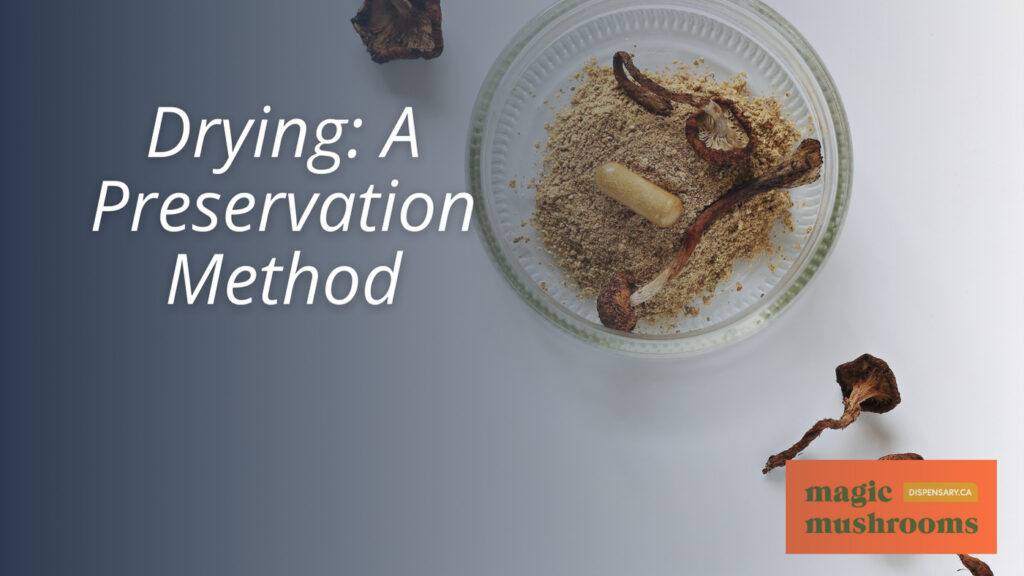
Utilizing drying as a preservation method can greatly extend the shelf life of psychedelic mushrooms, enabling them to retain their potency for up to a year or more. This process is essential in maintaining their functionality and avoiding degradation, particularly of the active compound psilocybin. By reducing the mushroom’s moisture content, we can inhibit the growth of mold and other microorganisms that may compromise its quality and efficacy.
Effective methods exist for achieving this state of dryness. One of the most common methods is dehydrators, which provide a controlled environment for evaporation, thereby preserving the mushroom’s integrity. Alternatively, desiccants like silica gel can be used. These substances absorb moisture from their surroundings, creating a dry environment conducive to preserving mushrooms.
However, it must be emphasized that drying alone is not enough to guarantee the longevity of psychedelic mushrooms. While it is a fundamental step, proper storage, which will be discussed in the next section, is also necessary. A cool, dark place and an airtight container can significantly help maintain the quality of the dried mushrooms.
Storing Psychedelic Mushrooms Correctly
Proper storage techniques are paramount for preserving the potency and effectiveness of psychedelic mushrooms over extended periods. Ensuring correct storage can help maintain their psychoactive effects, a critical aspect for those seeking liberation through these natural substances.
Psychedelic mushrooms, like all organic substances, can degrade over time, especially when exposed to adverse conditions. This degradation can impact the psilocybin content, the compound responsible for the mushrooms’ psychoactive properties. Hence, it is crucial to contemplate the storage environment.
Avoid exposure to heat, light, and moisture, all of which can degrade the psilocybin content, thereby reducing the mushrooms’ effectiveness. Keeping your mushrooms in a cool, dark, and dry place can help maintain their potency. This could be a drawer or a cabinet that needs to be regularly opened or exposed to sunlight.
Beyond environmental conditions, the way the mushrooms are stored can also influence their longevity and efficacy. Vacuum-sealing or using airtight containers can enhance preservation. This limits exposure to air, further reducing the risk of degradation.
Ideal Storage Conditions
Understanding the best conditions for storing psychedelic mushrooms can greatly extend their shelf life and maintain their potency. Importantly, these fungi are sensitive to their environment, and improper storage can significantly decrease their psilocybin content, the compound responsible for their psychedelic effects.
In terms of temperature, a relaxed environment is recommended. Elevated temperatures can stimulate the growth of bacteria and mold, leading to spoilage. Additionally, heat can degrade the psilocybin content, reducing the potency of the mushrooms. Storing them in a more remarkable part of your home, such as a basement, is advisable.
Light can also impact the quality of these mushrooms. For that reason, they should be kept in a dark place. A cupboard or a drawer can often serve as an ideal storage location. Moreover, opaque containers can shield the mushrooms from any incidental light exposure.
When it comes to air exposure, it is also important to limit this as much as possible. Oxygen can react with psilocybin, leading to its degradation. Opting for vacuum-sealed or airtight containers can help significantly in preserving the potency of these mushrooms for a more extended period.
The Role of Moisture and Light
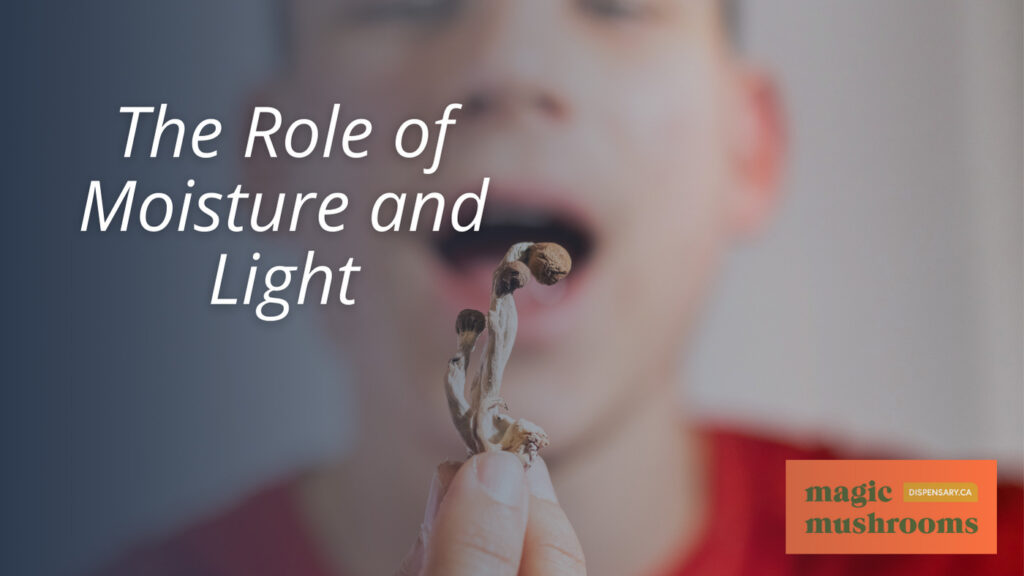
An often overlooked yet essential factor in the preservation of psychedelic mushrooms is the detrimental effect of moisture and light on the psilocybin content. Psilocybin, the psychoactive compound responsible for the mushrooms’ effects, is sensitive to both these elements. When mushrooms are exposed to moisture, it can lead to a gradual degradation of psilocybin, ultimately reducing their potency over time. Similarly, constant exposure to light can trigger a similar degradation process.
To understand this more clearly, consider the psilocybin as a delicate and intricate part of the mushroom’s composition. This part holds the key to the mind-expanding experiences sought by those who consume these mushrooms. When exposed to moisture and light, the delicate structure of psilocybin gets disrupted, and its potency decreases. This loss is not just a reduction in the strength of the mushrooms, but a diminishment of the potential experiences and insights they could provide.
Therefore, careful storage of these mushrooms in a cool, dry, and dark environment is pivotal. Airtight containers, preferably coupled with desiccants, can protect the mushrooms from moisture and light degradation. Regular monitoring of the mushrooms’ appearance, smell, and potency can also indicate their state of preservation.
Freezing Psychedelic Mushrooms
While the impact of moisture and light on the preservation of psilocybin in magic mushrooms is significant, freezing is another effective method of preserving these mushrooms and prolonging their potency. Freezing can slow down enzymatic processes that lead to the breakdown of psilocybin, hence maintaining its psychoactive effects. This preservation technique is beneficial for those who seek to use these mushrooms for their therapeutic potential, offering a means of liberation from the constraints of time and degradation.
Adequately sealed and stored psychedelic mushrooms in a freezer can remain potent for up to a year or longer. The process requires careful attention to detail; mushrooms must be stored in an airtight container or vacuum-sealed bag before freezing. This is important to prevent moisture and freezer burn, which can compromise the quality and potency of the mushrooms.
Freezing psychedelic mushrooms is a recommended method for long-term storage to guarantee their efficacy and potency. This method plays a significant role in maintaining the integrity of psilocybin, allowing users to experience the full benefits of this natural compound over time. It is crucial to note, however, that while freezing extends the life of the mushrooms, it does not guarantee indefinite preservation. Regular checks are still necessary to ensure the mushrooms remain in ideal condition.
Can Mold Grow on Mushrooms?
Mold, an unwelcome intruder, can indeed infest psychedelic mushrooms, especially when they are improperly stored or exposed to moisture. This fungi’s silent invasion poses a significant threat to the quality and safety of these potent natural wonders. Mold growth not only indicates contamination but can also alter the chemical composition of the mushrooms, potentially dampening their potency and impacting the overall psychedelic experience.
Given the recent promising study results concerning psilocybin’s potential in treating major depression, the need to maintain the quality of these resources cannot be overstated. The presence of mold could undermine these therapeutic benefits, presenting potential health risks such as nausea, vomiting, and allergic reactions. This underscores the importance of vigilance in mushroom storage.
Ensuring that mushrooms are kept in a dry, relaxed environment is essential in preventing mold growth. This step is pivotal in preserving the mushroom’s physical state and its potent psychedelic properties. The sanctity of the mushroom, its unique ability to open doors of perception and to provide liberation from the shackles of mental health disorders, must not be compromised by negligent storage practices.
Effects of Consuming Expired Mushrooms
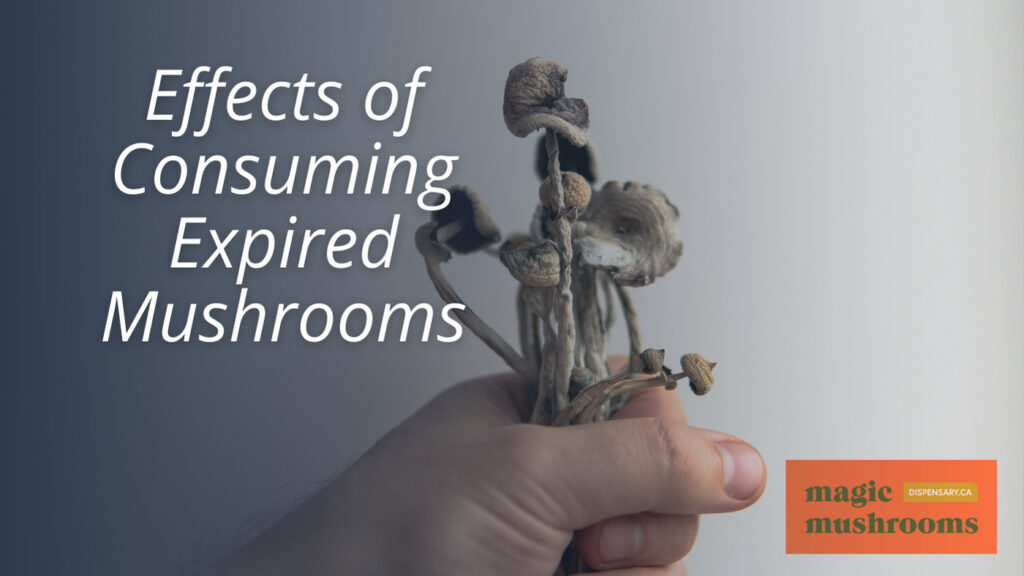
What happens when one consumes expired psychedelic mushrooms, you may wonder? The ingestion of such mushrooms could lead to experiences that are less potent or even unpredictable due to the degradation of psilocybin, the active compound that induces the psychedelic effects. This degradation is often accelerated by exposure to elements such as moisture, heat, light, and oxygen.
The loss of potency may not be the only concern. The expiration of psychedelic mushrooms could also present certain health risks. As the mushrooms decompose, harmful compounds or bacteria may form, posing potential harm to the consumer. Importantly, the intensity and nature of these effects can vary widely, mainly depending on the specific conditions under which the mushrooms were stored and the time since their expiration.
Moreover, the unpredictability of the experience can be disconcerting. The concentration of active compounds in expired mushrooms may fluctuate, leading to uncertain outcomes. This unpredictability could potentially alter the liberating journey one seeks through the consumption of psychedelic mushrooms, possibly turning it into an unpleasant or even distressing experience.
Thus, while the desire for liberation through the consumption of psychedelic mushrooms is understandable, it’s crucial to be aware of the potential risks and diminished effects that can come with consuming expired ones. The preservation of their potency and safety is vital, ensuring that the experience is as enlightening and beneficial as it is intended to be.
Safety Measures When Storing
To mitigate the risks associated with consuming expired psychedelic mushrooms and safeguard their therapeutic potential, it is essential to understand and implement proper storage methods. The potency of these mushrooms can diminish over time due to the degradation of psilocybin, the active compound responsible for their psychoactive effects. Hence, taking steps to slow down this degradation process becomes paramount.
A key aspect in maintaining the efficacy of psychedelic mushrooms is to store them properly. This involves placing them in a cool, dark, and dry environment. These conditions can notably reduce the rate of psilocybin degradation, thereby preserving the mushrooms’ potency.
Additionally, using an airtight container for storage can further protect the magic mushrooms. By limiting exposure to oxygen, the degradation process is slowed down, helping to maintain the effectiveness of the mushrooms for a more extended period.
Furthermore, monitoring the appearance, smell, and taste of these mushrooms is advised. Any alterations in these characteristics can indicate a loss in freshness and potency. If you detect any such changes, it is recommended that you consult a professional before consuming the mushrooms.
The Impact of Temperature
While the degradation of psilocybin mushrooms is a natural occurrence over time, it is greatly accelerated when these organisms are exposed to high temperatures. The psilocybin compound, which is responsible for the psychedelic effects of these mushrooms, is susceptible to heat.
Exposure to excessive heat can break down psilocybin, reducing its potency and potentially altering its effects. Recent research underscores that this degradation can undermine the therapeutic potential of these mushrooms, particularly in the context of mental health treatments. The results of these treatments can be compromised if the psilocybin is not at its best potency due to improper storage.
In addition to direct exposure to heat, temperature fluctuations can also negatively impact the integrity of psilocybin mushrooms. Rapid changes in temperature can accelerate the degradation process, shortening the shelf life of these magic mushrooms. This can prove particularly problematic for individuals seeking to stockpile these mushrooms for personal use or therapeutic applications.
To mitigate these risks, proper storage is crucial. Storing psychedelic mushrooms in relaxed, dark environments can help preserve their potency and longevity. Airtight containers can provide additional protection, preventing exposure to the elements and maintaining a stable temperature.
In pursuit of liberation, it is critical to understand and respect the delicate nature of psilocybin mushrooms. By doing so, we can secure the longevity and potency of this valuable resource, harnessing its full potential for personal and therapeutic use.
Common Misconceptions About Shelf-Life
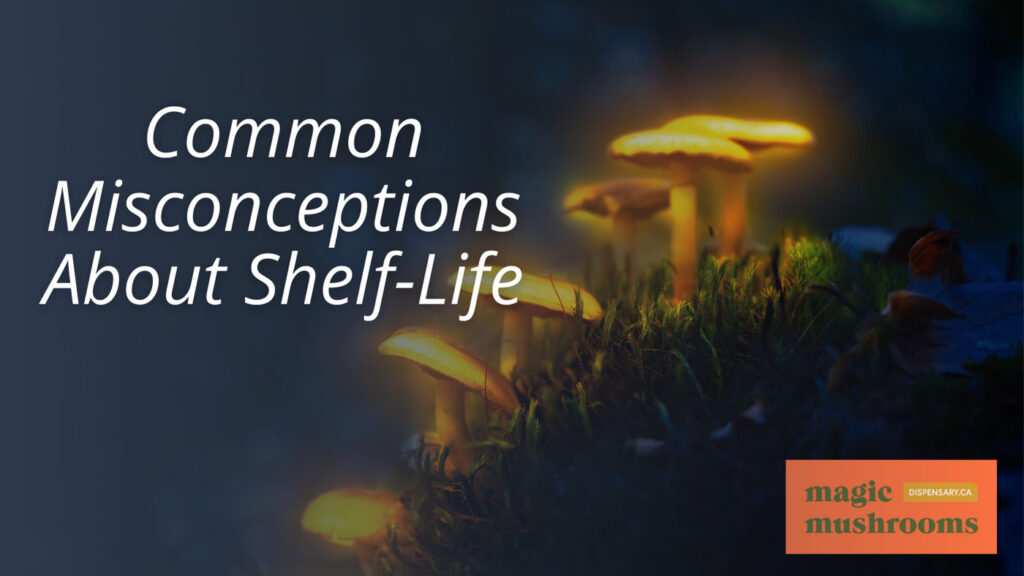
Addressing common misconceptions about the shelf-life of psychedelic mushrooms is critical, particularly in the context of their use for therapeutic purposes. Like their culinary counterparts, many believe these fungi are perishable goods with a brief potency period. This notion, however, doesn’t hold under scientific scrutiny.
Psilocybin, the active compound in psychedelic mushrooms, is remarkably stable and doesn’t degrade over time as one might expect. Consequently, assuming appropriate storage, these mushrooms can maintain their potency for years without expiration. This is a pivotal fact to recognize, as it enables the potential for long-term storage of these therapeutic tools, allowing individuals to have access when needed.
However, it is important to highlight that several factors can impact the shelf-life of these mushrooms. Exposure to heat, light, and moisture can hasten the mushrooms’ deterioration, though not necessarily the psilocybin. This can lead to a reduction in the overall quality and effectiveness of the mushrooms over time.
While psychedelic mushrooms do not technically expire, their potency and effects can diminish over an extended period of poor storage conditions. This is not due to the expiration of the psilocybin but rather the degradation of the mushroom matter that contains it.
Vacuum Sealing for Longevity
Preservation of psychedelic mushrooms through vacuum sealing represents a pivotal strategy in maintaining their longevity and potency. This method eliminates exposure to the three primary culprits of degradation: moisture, light, and oxygen. This tactic is particularly significant for those seeking liberation through the therapeutic potential of these fungi, as it guarantees the potent effects are not compromised with time.
Vacuum sealing is a highly efficient and cost-effective way to store psychedelic mushrooms for future use. Individuals can quickly adopt this method, making it popular among users and cultivators. The convenience of this method continues beyond its ease of use. Properly sealed, the mushrooms can remain potent for an extended period, stretching over months and even years, depending on storage conditions.
The quality of the mushrooms is paramount to the experience, and vacuum sealing ensures this quality is maintained. The potency of the mushroom, defined by the concentration of the compound psilocybin, is preserved by preventing any degradation that could occur due to environmental factors. This results in a reliable and consistent experience for the user, regardless of when the mushroom was harvested.
While mushrooms in their natural state have a limited lifespan, the vacuum sealing technique extends their usability significantly. It represents an effective strategy for those seeking the profound therapeutic and consciousness-expanding opportunities that psychedelic mushrooms can provide, enabling the benefits to be accessible at any time. Vacuum sealing serves as a bridge to liberation, offering a solution to the fleeting nature of these potent fungi.
How Long Is Too Long?
In considering the importance of psilocybin mushrooms, it’s important to understand that although they don’t technically expire like conventional food products, their psychoactive properties can degrade over time. This is primarily due to light, heat, moisture, and oxygen exposure. Over prolonged periods, these factors can accelerate the degradation of psilocybin, the primary psychoactive component in these mushrooms, leading to a marked decrease in potency.
Therefore, it is essential to take into account the age of your psilocybin mushrooms when planning consumption. While older mushrooms aren’t necessarily harmful, their reduced potency may necessitate increased quantities to achieve the desired psychedelic effects. This can lead to unpredictable experiences, as estimating the exact potency of aged mushrooms can be challenging.
Proper storage methods can slow down the degradation process. Keeping your mushrooms in a cool, dark, and dry place helps maintain their potency for longer. Vacuum sealing, discussed in the previous section, is an effective method to minimize exposure to the elements and maintain mushroom potency.
However, even with optimal storage, the potency of these mushrooms will inevitably decrease over time. So, how long is too long? There is yet to be a definitive answer, as it varies based on storage conditions and original mushroom potency. However, consumption should ideally occur within a year of harvest for best effects.
In the pursuit of liberation through psychedelic experiences, recognizing the temporal limitations of these natural compounds is essential. Understanding the correlation between time and potency ensures a safer, more controlled, and potentially enlightening experience.
The Science Behind Decomposition
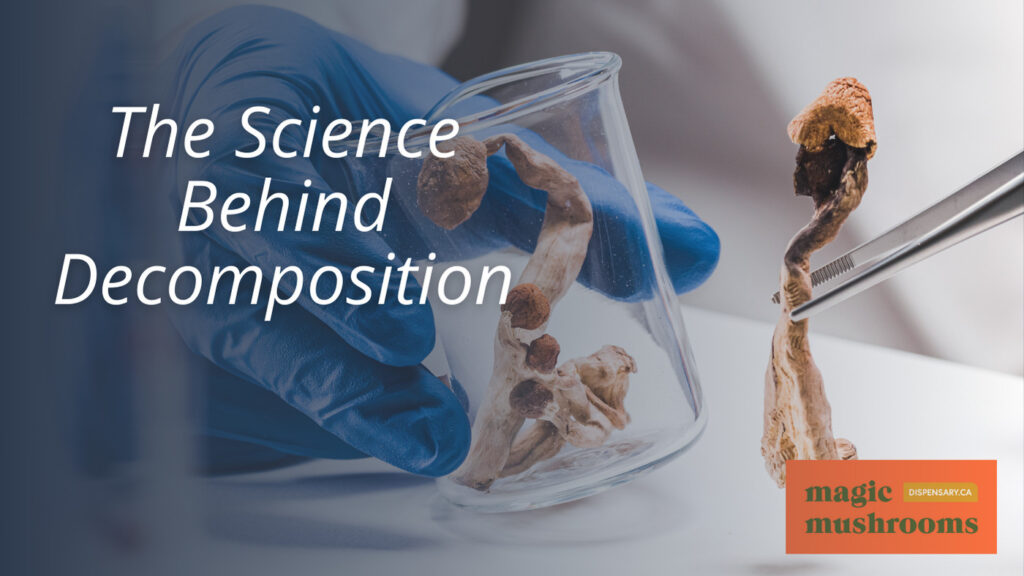
Understanding the scientific factors that contribute to the degradation of psilocybin in magic mushrooms is essential to maintaining their psychoactive properties over time. As the active compound in these mushrooms, psilocybin’s potency can be significantly affected by environmental conditions such as temperature, light exposure, and humidity.
When psychedelic mushrooms are fresh, their shelf life is relatively short, often starting to degrade within days. This degradation results in a loss of psilocybin’s psychoactive effects, rendering the mushrooms less potent.
Buying Microdosing Mushrooms Online in Canada
Are you an avid microdoser or looking to venture into the art of microdosing? Working with a reliable, trustworthy shrooms dispensary is paramount in your journey of becoming a better version of yourself. Magic Mushroom Dispensary prides itself on its comprehensive collection of top-notch microdosing products, psilocybin books, excellent customer service, and fast, discreet shipping. Visit our online shop today and enjoy low prices and free shipping for orders above $99.
Originally posted on March 20, 2024 @ 7:20 am

